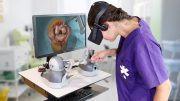By Katie Knapton, Founder of PhysioFastOnline
Prehab (Preventative Rehabilitation) is a familiar phrase in the sports world as it is widely acknowledged that it makes sense to train the muscles you need for your chosen speciality and strengthen them appropriately to try and reduce the incidence of injury. Top tennis player Roger Federer is the perfect example of this as he incorporates regular prehab into his training regime and most of us accept that in order to run a marathon we would spend a dedicated amount of time training for it.
However, it is a relatively unknown concept in the world of surgery yet surely it makes sense to be as fit as possible before undergoing any surgery? After all most people have heard of rehab which has long been used to help people to recover from everything from a stroke to operations to replace an arthritic hip or knee. Yet there is much less discussion about prehab despite evidence that preparing patients in advance of surgery improves outcomes and also enhances recovery.
What is Prehab?
There are a number of differing definitions of prehabilitation when applying it in surgical terms. In the Orthopaedic world the idea that increasing someone’s fitness and muscle strength prior to an operation is likely to produce better outcomes, reduced complications and reduced spend is not new but still not widely used. A paper reviewing the effect of prehabilitation to improve patients with severe disability from hip or knee osteoarthritis reported on patients having benefited from the programme which included exercise and specific education prior to their orthopaedic surgery (DesmeulesF, Hall J, Woodhouse L. Physiother Can. 2013;65.) This idea has spread into other areas of medicine especially with oncology and major surgical interventions with the premise that it would be beneficial not only for surgical interventions but also for ongoing treatment.
PREPARE
The Imperial College Healthcare Trust’s PREPARE for Surgery programme, trains patients for surgery based on their individual needs. It looks at different factors that are important to focus on before and after a procedure, including physical activity, diet, psychological wellbeing and medication management. The outcomes collected are a significant reduction in the average post-operative hospital stay, reduced complications, less incidence of pneumonia, improved physical function and an improvement in self-confidence.
In Southampton, the Trust has piloted a Prehab programme for rectal cancer patients. Their conclusions were that prehab resulted in significant improvements in fitness and augmented pathological tumour regression. (Exercise prehabilitation may lead to augmented tumour regression following neoadjuvant chemoradiotherapy in locally advanced rectal cancer West et al Acta Oncol 2019 Feb 6:1-8). There is currently an ongoing trial called the Wessex Fit-4-Cancer Surgery Trial (WesFit) based at University of Southampton looking further into the outcomes of prehabilitation.
Personal & Relevant
It appears to be generally accepted that it is important for the programme to be individualised for the particular patient and potentially include a multimodal approach which could include psychological support. The baseline health needs to be assessed and comorbidities and risk factors to exercise considered, such as cardiovascular disease. Patients will also require ongoing support whether by hospital-based programmes, community led or phone support.
Delivery of Care
We obviously need future studies looking at more innovative delivery of care as most have been based in community or hospital. However remote monitoring for encouragement and to increase adherence seems a sensible route to take to gain the maximum from prehabilitation.
For example, leading research has found that video consultations are as effective as face-to-face appointments and our experience, at PhysioFastOnline (PFO), is that three in four people can be triaged, assessed and supported online without any need for physical treatment. This means that our service is accessible to anyone with a screen and an internet connection from the comfort of their home, workplace or even overseas. Appointments are booked online, in real-time, and are generally available same day to swiftly start the process of treatment. For me there is no doubt that our kind of service has an important role to play in the future and will perfectly complement traditional physiotherapy.
Conclusion
Reviewing the literature leads us to recognise that further assessment is required to confirm that it is cost effective particularly in times where there is restricted expenditure and healthcare is rationed. But with an ever increasing sedentary and an ageing population there really seems no reason for the concept of prehabilitation not to be embraced in all aspects of healthcare.
This ageing population is resulting in more and more complex surgery and treatment and it is vital that we help patients to prepare with programmes that are personalised and relevant. This will, in its simplest terms, involve physical activity and all the known benefits associated with that such as improved bone density, joint mobility, heart and lung health and also a positive impact on mood and mental health. Some of the prehabilitation can also address specific muscle strengthening programmes which can be targeted depending on presentation or treatment to be undertaken.
For me, prehab is a proactive approach that encourages patients to participate and be involved in their care and the benefits of empowering them makes complete sense from both a physical and psychological aspect.





